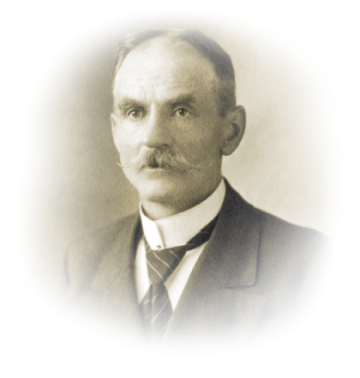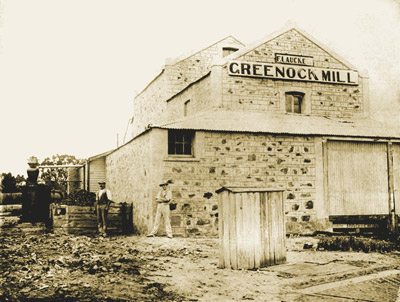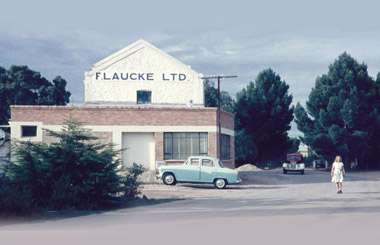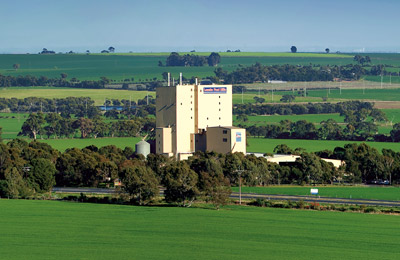Laucke Mills History
Laucke Mills was established in 1899 by Friedrich Laucke at Greenock in South Australia's famous Barossa Valley.

Friedrich Laucke came from Germany where his father had a watermill for turning furniture and attachments for milling flour. He had served in the German navy and was inspired by the adventure of, as he put it "seeing the furthest ends of the earth" He sailed from Bremen, Germany in 1895 and obtained a job as a miller at Edwin Davey & Sons flour mill in Salisbury, South Australia and later at Davey's Angaston mill.
He remained in their employ until rheumatic fever left him somewhat incapacitated and perhaps reflective of his prospects and future. He decided to leave employment with Edwin Davey and Sons. and in a most amicable parting advised he would "seek work how and when he could on his own account".

In 1899 Friedrich Laucke and his partner Friedrich Raethal approached the National Bank of Australasia regarding a mill in receivership at Greenock. Technically the mill had the best equipment possible but had suffered from the twin bite of over capitalisation and the increased sale of profitless flour. The previous owner Finke had worked very hard to realise a scale of production that could repay his investments but the more he sold the more he lost. No other details exist for a more precise examination but the phenomenon is not exactly unknown to us all, whatever the era.
Laucke had the support of local farmers to buy the Greenock mill but the bank was sceptical given the partnership had scant assets and the mill had already cost the bank many thousands of pounds.
Apart from that, the Greenock mill had already been insolvent twice before and had blown up in boiler explosions more than once. The best that could be done was to let the mill work but without the banks help. Freidrich Laucke would buy wheat on his own account and prove his ability to mill good flour from what surely seemed a cursed site.
Apart from the wreckage of the power plant there was extensive damage to the mill itself. Freidrich Raethal soon felt the pain of a leg that was smashed in the explosion and there was no prospect for a complete recovery. Raethal declared he was finished with Greenock and finished with milling.
It is a matter of local record that Freidrich Laucke climbed up onto the smoking ruin, lit a cigar, puffed away and declared to all and sundry that he would rebuild the mill.
For him there was nothing else he could do.
The School of Mines in Adelaide traced the cause of the explosion to the bore water the mill was using. Another explosion was just a matter of time if they continued to use steam power.
Laucke was not too daunted about the bad news as he had a letter in his pocket from his brother in Germany describing a new motive power being adopted by the European mills. The letter referred to a "smoke" engine but it was really a gas producer attached to a combustion engine.
This time, with the support of his bankers, Freidrich Laucke imported Australia's first Otto cycle 56 horsepower suction-gas engine directly from the manufacturers - Crossley Brothers of Manchester. It came complete with a gas producer and was immediately commissioned into the rebuilt mill.
The new power plant proved to be an unqualified success and ran perfectly for another 48 years until the Greenock Mill was closed. When decommissioned, the "Old Otto" still had its original exhaust valve in it.
As the years roll by

In the late 1940's flour milling eventually ceased at the Greenock Mill however the Laucke milling business had been expanding over the years through many friendly acquisitions within the Barossa Valley and surrounding regions:
Strathalbyn Flour Mill in 1927, Angaston in 1933, Stockwell and Eudunda in 1951.
The Strathalbyn mill was replaced in 1961 and is not far from the original mill. It was the first mill built from the ground up in South Australia for over 50 years.

When the Greenock Mill was decommissioned it was not left silent and empty. First it was used to store flour, bran, pollard and other products. Then in the late 1950's a mixing plant was installed to manufacture mash feeds.
In 1963 a pellet mill was installed to cater for the ever growing demand for pelleted products. The business continued to expand and in 1989 a new state of the art feed mill was comissioned at Daveyston* on the western edge of the Barossa Valley. Numerous upgrades has followed resulting in the Daveyston mill being one of the most technically advanced mills in Australia.
* It is interesting to note the small township of Daveyston was given it's name after Edwin Davey, who had his first mill in that area.












